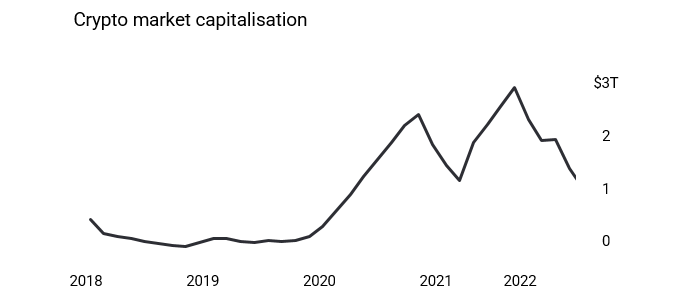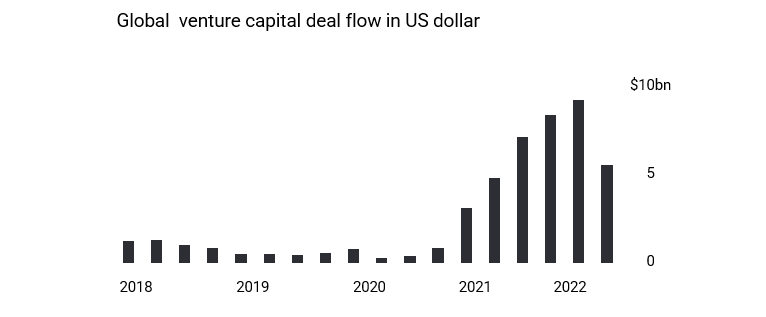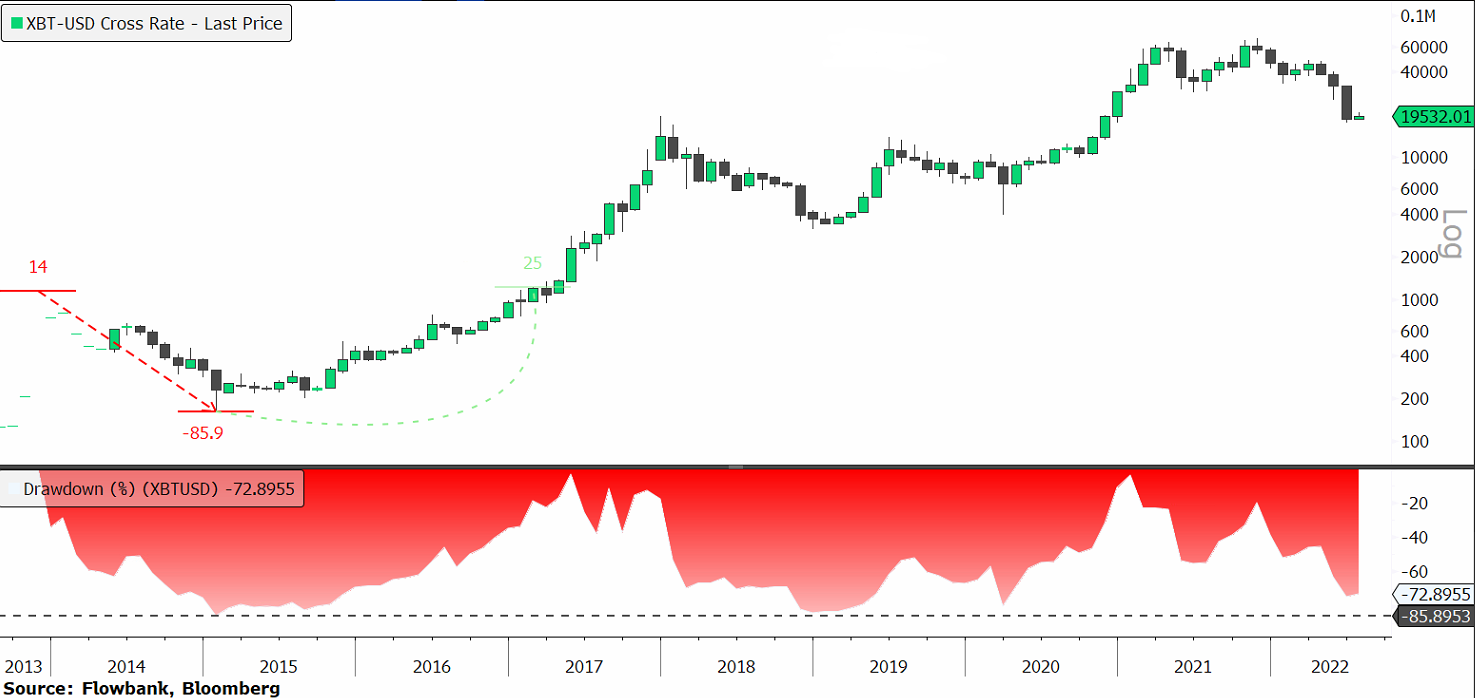Cryptocurrencies have gone through several major drops in their history — known as “crypto winters”. But could the market’s expansion and increasing adoption from Main Street to Wall Street mean there is more at stake now?
Crypto winters are damaging to the overall health of the cryptocurrency ecosystem as they decrease demand and slow development. However, they should not be treated lightly as they also tend to be followed by bull markets. Anybody who invests in cryptocurrencies should make sure that they are prepared for these events by following predefined strategies and staying up to date with the news.
Peaks and valleys
Crypto winter is a popular way to refer to market conditions in which most cryptocurrencies experience very large, sustained losses in value. The term “crypto winter” was first coined by Crypto Bobby on 20 September 2018 when he posted a Twitter thread detailing how he saw prices of most cryptocurrencies fall drastically from their 2018 highs.
This time around, the crypto winter is said to be caused by several factors, including a tightening of liquidity caused by central banks across the globe, government regulations – notably numerous bans from the likes of China, India, Turkey, and potentially Russia – and high-level hacks such as the attack on the bridge linking the Ethereum and Solana blockchains.
Moreover, selling pressure from miners has exacerbated the supply-demand imbalance as miners are liquidating their coins due to plunging prices, increasing energy costs, and increased competition. Several publicly listed miners have collectively sold 100% of their output in May, with Bitfarms' chief executive officer saying the company is "no longer HODLing” daily bitcoin production.
Because of these, FUD (fear, uncertainty, doubt) may continue to make headlines as many investors choose to hold off on buying until the situation improves.

There is more at stake this time
This has led many to fear that the Lehman Brothers moment for cryptos is around the corner. Just as the inability of lenders to meet margin calls was an early warning sign in the 2008 financial crisis, crypto last month has had its equivalent: Celsius Network, Babel Finance and Three Arrows Capital all revealed major troubles as digital-asset prices plunged, triggering a liquidity crunch.
However, what is happening today in the crypto space is very much similar to what one could expect from functioning but overheating the traditional financial sector. Kim Kardashian hawking a cryptocurrency that tanked shortly afterwards is one thing, but Fidelity’s plans to offer Bitcoin in 401(k)s could impact an entire generation. After crypto’s last two-year hibernation ended in 2020, the sector spiked to around USD3 trillion in total assets last November. To many market participants, this year’s downturn looks far more like a traditional financial de-leveraging as a result of excess liquidity in the system, poor risk management, and higher cost of capital (rising interest rates) than the end for crypto.
In addition, contrary to the last crypto winter, where start-ups raised capital by issuing their own tokens (ICO) and suffered from a crash in crypto, this time around, the funding landscape is different. Many start-ups sought out venture capital funding as a more traditional route to raising cash. This means that instead of relying on crypto wealth, some of the biggest players have vast reserves of hard currency stored to get through the blizzard as they work on growing new blockchains or building decentralized media platforms.
Behemoths like Andreessen Horowitz and Sequoia Capital are among those who collectively plugged almost USD43 billion into the sector since late 2020.

Never two without three?
The world’s largest cryptocurrency is down more than 50% this year and more than 70% from its November 2021 highs. Putting this into perspective with previous bear markets (2013 and 2018), one can affirm that the plunge in Bitcoin was much quicker and more brutal this time and further downside risk remains, should history repeat itself.
- In 2013-2014 Bitcoin lost 85.9% from peak to trough, lasting 14 months, and taking 25 months for the price to make another all-time-high (ATH).
- In 2018-2019 Bitcoin tumbled 83.9% from peak to trough, lasting 12 months, and taking 23 months for the price to make another ATH.
A basic extrapolation of historical data to the current bear market and applying an 80% drawdown from November’s high of USD69’000 yields a price target of USD13’800, suggesting Bitcoin could bottom around this level. And when it does, prices tend to recover 2 years later and make new highs based on past observations.

Long-term perspective
Although some people believe that a lasting decline in the price of cryptocurrencies is inevitable, others are more optimistic, appreciating recent industry breakthroughs. The best way to survive crypto winter is by holding a diversified portfolio, staying informed about developments in the space, and maintaining a long-term perspective. If history is any guide, Bitcoin could potentially bottom this cycle near USD14’000, and could perhaps reach the USD100’000 target during the next bull market.




